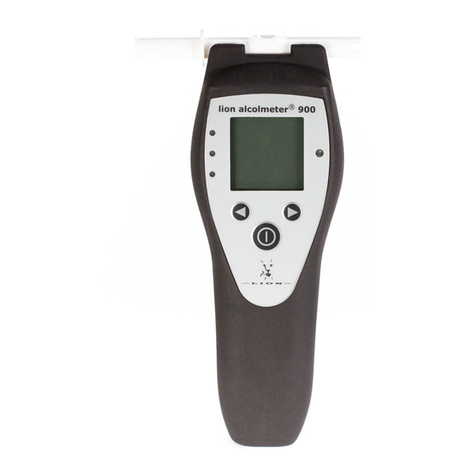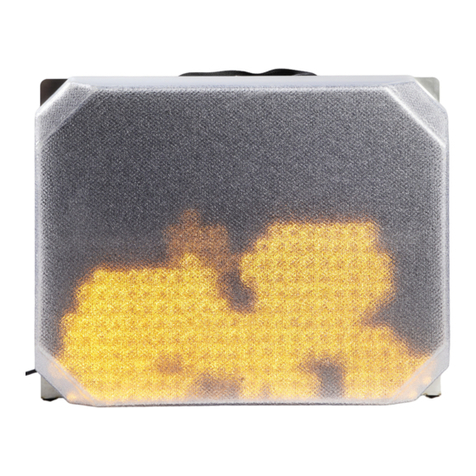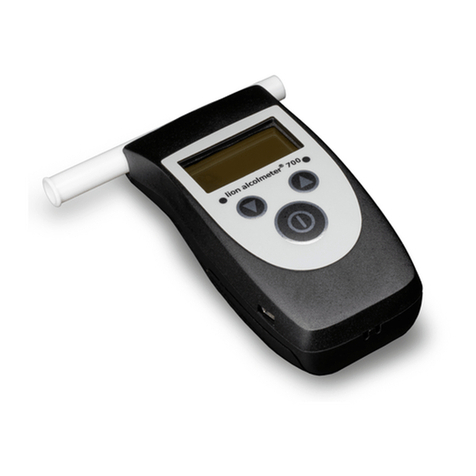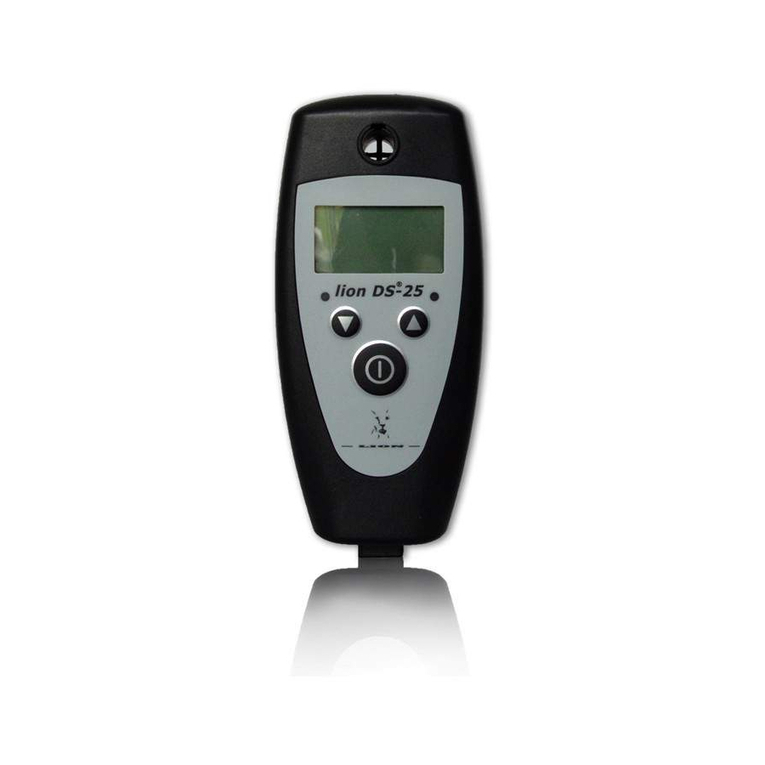Measuring
-Use the device to “search” for gases, as one would do with a normal gas meter.
The meter will display a reading if the holder enters the area of range of a transmitter, or if the Instructor
has manually changed a value.
If one of the measurements exceeds the preset lowest alarm level A1, the meter will give a normal alarm
signal; the optical alarms will flash in red and a sound will be emitted.
If one of the measurements exceeds the preset highest alarm level A2, the meter will give a fast alarm
signal; the optical alarms will flash fast in red and a faster sound will be emitted.
The text of the gas causing the alarm will blink to indicate the cause of the alarm.
An alarm will continue as long as one of the measurements is beyond the alarm limit.
Taking measurements using an external measuring probe
The supplied measuring probe can be used to take spot measurements. The built-in sensor is
deactivated automatically when the probe is connected to the Student Unit’s connector (2).
Measurements are then only taken using the probe.
-Take the probe and connect the probe’s connector to the connector (2) of the Student Unit.
Maximum and minimum measured values
Display maximum measured values
-Press the button briefly to show the
maximum measured values on the display.
The meter will show the maximum measured
Values on the display (figure 3.5), and then
automatically switch back to measuring mode after six seconds.
Delete maximum measured values
-When the maximum measured values are shown,
press and hold the button for two seconds.
The maximum measured values will be deleted. After six seconds, the Student Unit will automatically
switch back to measuring mode.
Display minimum measured Oxygen value
-Press the button twice (briefly) to show the
minimum measured Oxygen value
on the display.
The meter will show the minimum measured Oxygen value
on the display (figure 3.6), and then automatically switch
back to measuring mode after six seconds.
Delete minimum measured Oxygen value
-When the minimum measured Oxygen value is shown,
press and hold the button for two seconds.
The minimum measured Oxygen value will be deleted. After six seconds, the Student Unit will
automatically switch back to measuring mode.



































